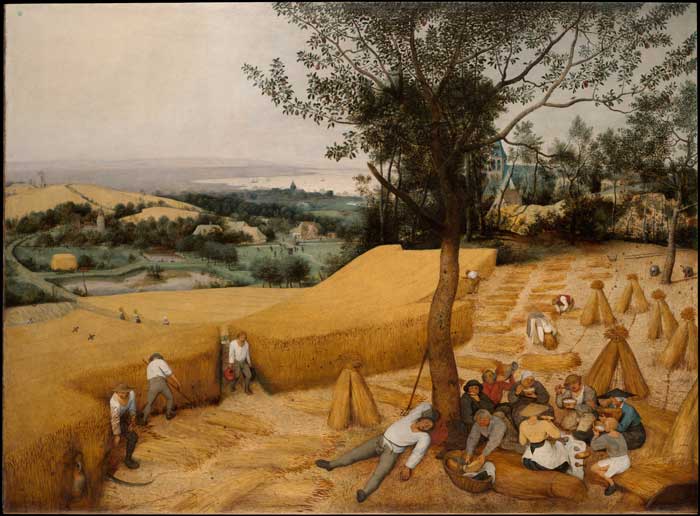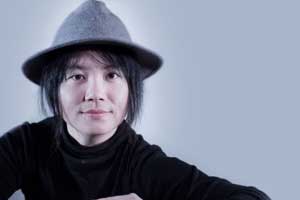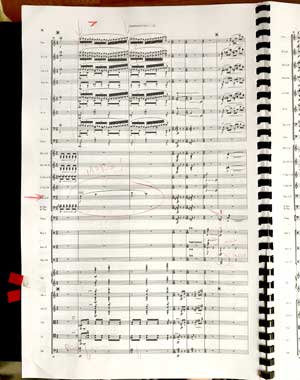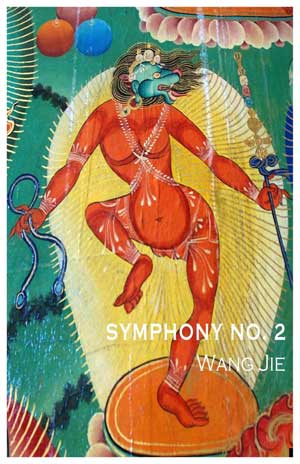
Pieter Bruegel the Elder, The Harvesters, 1565. Metropolitan Museum of Art. 46 7/8 x 63 3/4 in.
For Ernest Hemingway, no visit to New York City would be complete without a stop at the Metropolitan Museum of Art to see one of his favorite paintings, The Harvesters by Pieter Bruegel the Elder. Year after year, something in the work continued to compel the novelist’s attention.
Most of us can understand Hemingway’s passion. We sometimes find ourselves drawn repeatedly to a favorite painting, novel, poem, sculpture, or musical passage. If the work stays unchanged through time, our engagements always seem fresh and new.
But why, exactly? What is it about a work of art that compels such loyalty?
Something in Hemingway’s experience offers a clue. It seems the novelist was drawn to the Bruegel not solely for the pleasure of viewing its human figures, trees, and fields, but for a more visceral encounter: an experience of powerful emotion resulting from engagement with the geometry of the pictured wheat. Could it be that a work of art in any medium compels our loyalty less by its accessible representations and more by its innate formal patterns?
Answering that question would be easier if we could isolate for our inspection a work’s intriguing dynamics—divorce, in other words, the motivation for Hemingway’s attraction from the painting’s surface representations. And yet, how is that possible? Take away Bruegel’s prone men and bountiful harvest and his painting’s formal articulations go along for the ride. We find the same indissoluble marriage of representation and form in poetry, where removing obvious significations is impossible without erasing the printed text.

Wang Jie
What resists our efforts in painting and literature, however, we gain with a bow from a sister art. Because music reflects no panoply of the natural world to muddle our view of its notes and harmonies, we can observe more clearly the formal intricacies obscured by worldly representations in the Bruegel. Our unencumbered view might allow us to address with greater certainty the primary question: What is it about the aesthetic dynamic that allows the creation of a state of persistent attraction, so much so that that we are prone to shuttle our favorite works into a file marked “timeless?”
For a closer look at the musical dynamic we spoke with composer Wang Jie, a recipient of numerous industry awards and the author of works which have been performed in concert halls around the world. Most recently her work 13 Ways to Fly with a Blackbird received its world premiere at Carnegie Hall. During our conversation the composer described a creative interplay between her medium and the audience that might prove useful for our quest.
“Music for me is not about music itself, but about what it activates in the listener,” says Wang Jie. “But what kind of activation? That question has been occupying my consciousness for a while, and until recently I couldn’t answer it. Now I think I’ve come to realize that my ambition is to activate a history that is already in my listener’s memory.” This deeply embedded and largely unconscious archive–what Wang Jie refers to as “the history of the ear” –consists of the sum total of the listener’s past experiences. Personal events. Emotions. Other pieces of music. Colors. Everything falls into a memory basket packed with mental constructs ready for recall and renewal.
Perhaps we know viscerally that we possess this vast history, but we often have difficulty reaching it without help. “We have already worked out a coexisting dynamic with many of these memories,” says Wang Jie. “Especially the distant ones that are most mysterious. We have them, but we don’t really know what they are and how to recall them.”
Music, according to Wang Jie, not only offers a pathway to these memories but also helps us cast them in a fresh light. As we look anew at old experiences, we create fresh interpretations which Wang Jie refers to as “new memories.” She is fond of a quotation from Marcel Proust which seems to embody her view of music’s potential in the life of the listener: “The real voyage of discovery consists, not in seeking new landscapes, but in having new eyes.”

Wang Jie’s composing studio in New York City
And what those new eyes see–the nature of those new memories in the listener’s mind –is out of the hands of the musician. While the composer does have a formative concept, carried by the work, the listener’s own creativity determines meaning. “It’s not possible for a composer to press a pre-determined artistic agenda onto the audience,” says Wang Jie. Indeed, the same piece of music can have results which differ over time, dependent on what the listener brings to the encounter. “The piece doesn’t change, but the listener does. That’s where the interaction with the history of the ear occurs.”
The notes, harmonies, and rhythms of music, then, perform as creative agents in the minds of listeners. This generative view of aesthetic elements recalls the work of a philosopher who has had a profound effect on Wang Jie’s work. Susanne K. Langer, the first woman to be academically and popularly recognized as an American philosopher in the middle of the last century, posited that we can better understand our interactions with music (and by extension, we will see, with other art forms) by realizing that the human mind has the unique ability to think in terms of symbols. We manipulate these symbols in creative ways as we engage in complex patterns of thinking.
Symbols differ from signifiers, intended to point to and affect specific natural objects. They also differ from metaphors, intended to suggest parallel characteristics that enhance our understanding of tenors. Symbols are powerful generators of multitudinous thoughts, the scope of which is limited only by the individual’s history and powers of imagination.
When we listen to music in particular, said Langer, we deal with a special kind of symbol which she labeled “free” because they are not tied to natural objects. The note of “C,” for example, stands purely on its own and does not signify a field of wheat, a sleeping harvester, or a tree. As we have already noted, it is this very divorce from nature that distinguishes musical notes from Bruegel’s brush stroke or a poem’s word—both of which remain captive to a presentation of a natural object or a defined mental image. And it is their very divorce from nature which frees the listener to assign musical notes to random items from the history of the ear, then engineer them in refreshing ways.
The creative dynamic we have been describing has led Wang Jie to construct her own definition of music:
“Music consists of sonic sensations in temporal form suggestive of organizational principles that do not exist in nature. The sensations interact with the memory of the listener. The experience of various organizational principles renews that memory.”
The formal patterns of music operate as a kind of generative agent in a listener whose comprehensive understanding leads to results neither planned nor expected by the composer. Arnold Schoenberg once likened the unanticipated results of a composition to natural productions from a living organism, identifying the final result as beauty:
“Though the object of [musical] form is not beauty, by providing comprehensibility, form produces beauty. An apple tree does not exist in order to give us apples, but it produces them nonetheless.”

Page 20 with rehearsal notes, Symphony No.1 by Wang Jie
These same principles are apparent in all media. The painter, the sculptor, the film maker, the poet, the novelist, the photographer: We need not look far to discover many creative individuals working with their own media’s organizational principles to free their symbols from the captivity of natural representation, in the process creating formal substrates that allow audiences to access and renew their memories.
It is this very universalism that lies at the root of Walter Pater’s maxim: “All arts aspire to the condition of music.” That “condition” is the freedom of the musical tone from the chains of signification, and the special talent possessed by music to inspire in the human mind the creative agency of free symbols. Seeking to benefit from the power generated by musical symbols, artists in other media seek to various degrees of intensity a display of the formal substrate, sometimes to an extreme extent. Schoenberg once praised the compulsion of contemporary artists to remove the texts from their works:
“Wassily Kandinsky and Oskar Kokoschka paint pictures the objective theme of which is hardly more than an excuse to improvise in colors and forms and to express themselves as only the musician expressed himself until now. […] These are symptoms of a gradually expanding knowledge of the true nature of art.”
Of course, abstraction lies along a continuum. We do not think of Bruegel’s painting, with its images of harvesters and wheat, as being “abstract” in the sense of a painting by Wassily Kandinsky or Jackson Pollock. Even so, has not Bruegel modified to some extent the appearance of natural objects? The harvesters, after all, do not appear on canvas as they would in a photograph. Bruegel seems to tamp them down, to subdue them in a way that reduces the natural immediacy of their appearance. Doing so encourages the viewer to unseat them from their natural representations, to deal with them less as captive and more as free symbols that can be used to unearth old memories and renew them as creative cognitive constructs.
We see similar efforts elsewhere. Consider film director Robert Bresson, known for his practice of subduing his actors into a kind of blank mentality, referring to them as “models” and making them, as one interviewer put it, “less expressive than humans in real life.” The result was a diminishment of the human figure very similar to Bruegel’s reductions. One of Bresson’s non-professional actors, Pierre Leymarie, reflected on the result of the director’s efforts in words that recall our discussion of the creative potential of the free musical symbol:
“Looking back, I wonder if this neutrality isn’t a device that allows viewers to bring their own personal elements to it and so make it possible for everyone to see a somewhat different film because the starting point is neutral.”
Leymarie added that the film can have “different versions, depending on the different viewers,” a reflection that recalls what we have said about the idiosyncrasy of the creative process, dependent as it is on the individual and ever evolving history of the ear. Noteworthy, too, is Bresson’s own comment that a successful film is “something that is continually being reborn,” an assertion that recalls the renewal we have attributed to musical compositions.

Score cover, Symphony No.2, by Wang Jie
Many ambitious works divorce themselves from natural representation to an extent far greater than Bruegel’s painting or Bresson’s film. We are thinking of works with high levels of formal ambition—a painting by Jackson Pollock, a poem by Dylan Thomas, a film by John Cage. These artists have taken to the limit the implication of Walter Pater’s maxim, with works that have achieved an elevated level so close to that of music that the formal substrate pops into view. The prone figures of Bruegel, the wheat fields, the hills—all disappear.
Musical works themselves, we should acknowledge, exist along the same continuum of abstraction. While a Bach concerto might feel at home with the formally ambitious works just cited, a work of program music might not. And even musical works which contain text exist along a formal incline. Schoenberg noted that “the Gregorian Chant does not profit as much from the meaning of the words as does the Protestant chorale; it lives on music alone.”
Schoenberg once stated that a composer who penetrates to the most remote consequences of a musical idea will create a work at an elevated level of complexity, one that may well be rejected or puzzling to audiences that demand a more comprehensible presentation, listeners invested in what the composer termed “an aesthetic of popular complaisance.”
Certainly, not all audiences are equally open to the potentials of the formal substrate. One viewer of The Harvesters will be satisfied with a straightforward engagement with the most apparent elements of the work’s narrative: Reclining workers taking well-deserved breaks from their labors in the field. Such a viewer considers the painting less an interactive object and more a historical artifact, its images performing the role of captive symbols that signify natural events or state moral positions on industry and society. Multiple engagements with the work would be pointless, for everything it has to offer can be obtained from a single viewing.
But must an audience of formally ambitious works be restricted to individuals who have developed skills in negotiating difficult terrains? One might suppose so, but Wang Jie’s experience with her own music tells a different story. “Two years ago one of my pieces was played in a Georgia prison,” she recalls. “This audience had almost no history of classical music, of hearing composers such as Bach or Dvorak.” To Wang Jie’s surprise, her audience was not repelled by her music’s challenging abstractions. “I found that they noticed intensity and gesture more than how friendly the notes were.”
This experience shows that a willing audience can overcome any immediate objection to the distortion of nature. Composer Charles Ives once asserted that composers should be wary of an appeal to what he called “the judgment of the ear.” What we consider immovable laws of tone were, in his view, the results of education more than the promptings of nature.

Wang Jie in rehearsal with the Buffalo Philharmonic and music director JoAnn Falletta
Throughout history, musical audiences have continually reset the boundary between consonances and dissonances. As that boundary stretches to the horizon, viewers more sensitive to higher forms will revisit works that best exhibit the power of free symbols to stimulate a more nuanced view of the human. The calling up of forgotten unconscious elements and their transformation into new memories invites listeners to engage in journeys of self-discovery. “Once you’ve heard a piece of music you know its form,” said Wang Jie. “Then repeated listening brings new layers of understanding of yourself.”
At this point we might posit an answer to our essay’s opening question. The promise of greater self-awareness binds us to our favorite works of art and encourages our repeated engagements with those formal substrates most appealing to the special history of our ear. This is why Hemingway found himself captivated by The Harvesters, returning year after year to transform the geometry of the painting’s wheat into prismatic patterns of cognitive impressions. How could any such encounter with art, no matter how often repeated, be other than fresh and new?
Wang Jie has emerged as an evocative voice in the world of musical composition. Earlier this year her composition 13 Ways to Fly with a Blackbird received its world premiere at Carnegie Hall. Other recent events include the performance of her concert opera From the Other Sky as the centerpiece of the American Composers Orchestra’s opening concert. The Minnesota Orchestra, led by Osmo Vanska, performed her Symphony No. 1 as part of its “Future Classics” series. Her Symphony No. 2, commissioned and premiered by the Detroit Symphony Orchestra under the baton of Leonard Slatkin, was streamed live to global audiences. Oboe Concerto, co-commissioned by The Koussevitzky Foundation in the Library of Congress and The League of Composers Orchestra, premiered at New York City’s Miller Theater, with The New York Philharmonic’s former principle oboist Liang Wang as soloist. Wang Jie has won praise from reviewers in a variety of media including The New York Times. She is currently working on her Symphony No. 3 for the Buffalo Philharmonic for a world premiere performance in the upcoming season. Her recent essay “Love at Fifth Sight” about her personal creative process has been translated into multiple languages.
Essay by Walter Idlewild
Images courtesy Wang Jie
Posted June 21, 2019
Works Cited
Robert Bresson. The Models of Pickpocket, a film by Babette Mangolte, (2003). Pickpocket (1959). Criterion Collection, 2014.
Charles Ives. Essays Before a Sonata. W.W. Norton, 1962.
Susanne K. Langer. Philosophy in a New Key, Harvard University Press, 1957.
Arnold Schoenberg. Style and Idea, (1912). Philosophical Library, 1950.
Unattributed statements by Wang Jie were recorded during interviews with Walter Idlewild in March and May 2019.

